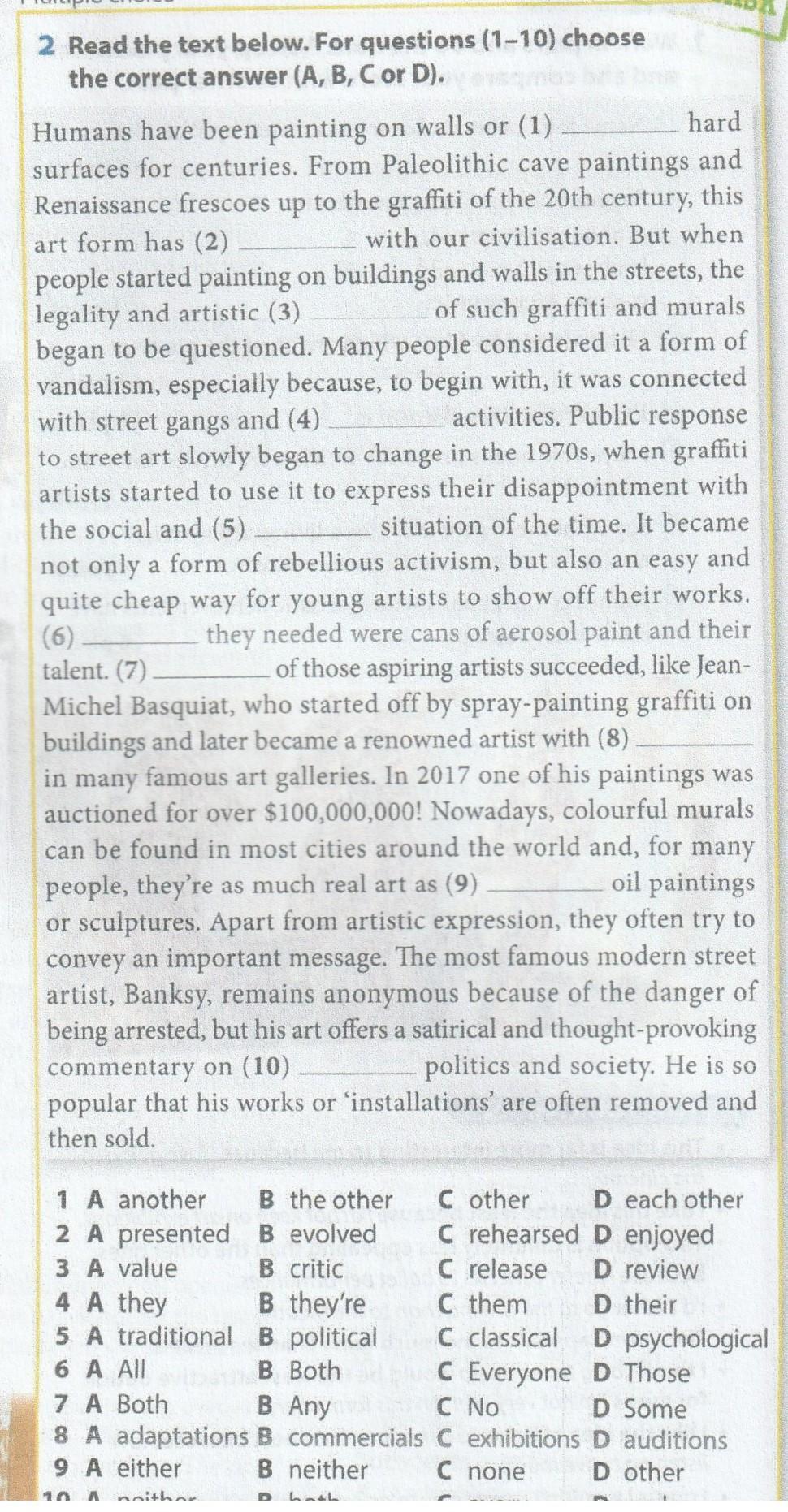Предмет: Английский язык,
автор: quokkahanjisung55
Humans have been painting on walls or (1)_____ hard surfaces for centuries. From Paleolithic cave paintings and Renaissance frescoes up to the graffiti of the 20th century, this art form has (2)______ with our civilisation. But when people started painting on buildings and walls in the streets, the legality and artistic (3)______ of such graffiti and murals began to be questioned. Many people considered it a form of vandalism, especially because, to begin with, it was connected with street gangs and (4)_____ activities. Public response to street art slowly began to change in the 1970s, when graffiti artists started to use it to express their disappointment with the social and (5)_______ situation of the time. It became not only a form of rebellious activism, but also an easy and quite cheap way for young artists to show off their works. (6)_______ they needed were cans of aerosol paint and their talent. (7)_______ of those aspiring artists succeeded, like Jean- Michel Basquiat, who started off by spray-painting graffiti on buildings and later became a renowned artist with (8)______ in many famous art galleries. In 2017 one of his paintings was auctioned for over $100,000,000! Nowadays, colourful murals can be found in most cities around the world and, for many people, they're as much real art as (9)_________ oil paintings or sculptures. Apart from artistic expression, they often try to convey an important message. The most famous modern street artist, Banksy, remains anonymous because of the danger of being arrested, but his art offers a satirical and thought-provoking commentary on (10)_________ politics and society. He is so popular that his works or 'installations' are often removed and then sold.
1. A) another; B) the other; C) other; D) each other;
2. A) presented; B) evolved; C) rehearsed; D) enjoyed;
3. A) value; B) critic; C) release; D) review;
4. A) they; B) they're; C) them; D) their;
5. A) traditional; B) political; C) classical; D) psychological; 6. A) All; B) Both; C) Everyone; D) Those;
7. A) Both; B) Any; C) No; D) Some; 8. A) adaptations; B) commercials; C) exhibitions; D) auditions;
9. A) either; B) neither; C) none; D) other;
10. A) maithar; B) commercials; C) every; B) each;
Приложения:

Ответы
Автор ответа:
2
Ответ: 1. A; 2. B; 3. A; 4. D; 5. B; 6. A; 7. D; 8. C; 9. D; 10. B
Объяснение:
Похожие вопросы
Предмет: Математика,
автор: savenokyaroslav212
Предмет: Биология,
автор: arinusy2007
Предмет: Окружающий мир,
автор: mashasianitsya
Предмет: Другие предметы,
автор: kgirev